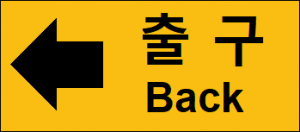
Korail, officially the “Korea Railroad Corporation” is South Korea’s national railway company. A pubblic company formed in 2005 with the restructuration of the old Korean National Railways, Korail runs an extensive 3558 Km-long network, 2/3rds of wich is electrified at 25Kv 60Hz AC, including the extensive KTX 300Km/h-capable high-speed lines.
Korail operates roughly four different “classes” of trains: the KTX (“Korea Train Express”) high-speed trains, derived from the French TGV system, connecting all the major cities of South Korea, running both on dedicated high-speed lines (the Gyeongbu HSR from Seoul to Busan and the Honam HSR from Seoul to Gwangju) and on “upgraded” conventional lines as well; the rapid ITX services (“Inter-city Train eXpress”) running on conventional lines, the “Saemaeul” and “Mugunghwa” class of trains, wich ran anything from express services to rural local services using loco-hauled stock (both with diesel and electric ones) or dedicated diesel railcars, and finally, the extensive Seoul Metropolitan Area commuter and urban services, operated by a large fleet of stainless steel electric multiple units. Korail also runs an extensive freight railway service and no less than seven different tourist trains.
Like the preceeding KNR, Korail’s rolling stock is a very interesting mix between european-style electric locomotives and high-speed trains, US-style diesel locomotives and commuter trains influenced by Japanese standards. However, in the last decades, more and more domestically-designed trains are being introduced.
Signalling, network arrangment (such as left-hand running) and operational procedures (such as pointing-and-calling) are also derived from the Japanese practice, while the track gauge is the international standard 1435mm.
As mentioned earlier, Korail is a pubblic corporation, owned by the South Korean government and managed by the Ministry of Land, Infrastructure and Transporation.
KTX High-Speed trains
Diesel Locomotives
